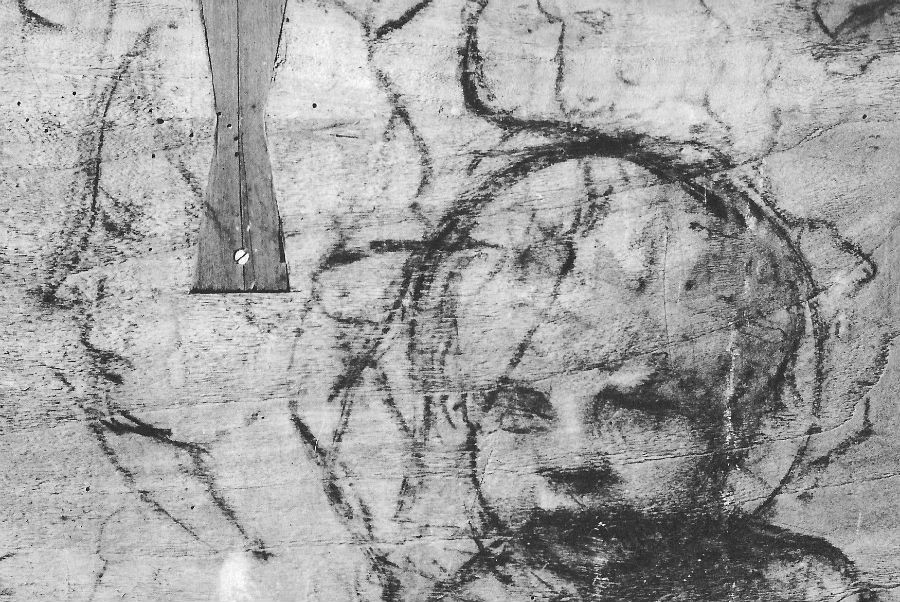The Art of Renaissance Scribbles

The word “doodle” was first defined as art in the 1936 Frank Capra film Mr. Deeds Goes to Town, when Longfellow Deeds, played by Gary Cooper, said that a “doodler is a word we made up back home to describe someone who makes foolish designs on paper while they’re thinking.”
Over the 20th century, doodles or scribbles have increasingly been considered a part of art practice (think Cy Twombly) and a means of psychological analysis (think Freud—Sigmund, not Lucian.) But Diane Bodart, the David Rosand Assistant Professor of Italian Renaissance Art History, traces the history of scribbling centuries earlier, to the Renaissance when, she says, such works were not merely absentminded drawings—they were part of the artistic process. Scribbles were found on all sorts of material—in the margins of artwork, behind or under paintings, frescoes and drawings by such masters as Leonardo da Vinci, Michelangelo, Raphael and Titian.
Bodart, who arrived at Columbia in 2013 after teaching at the University of Poitiers in France, has been conducting a research project, titled Renaissance Scribbles and Doodles, that systematically explores and catalogs this little-known area of production and the creative process behind it. In 2017 she received a Provost’s Junior Faculty Diversity grant for the project, which involves archival and fieldwork, course development and the creation of a digital platform, hosted by Columbia’s Media Center for Art History. The aim is to index and map this artistic output for the first time and, eventually, publish a book by Bodart and her collaborators.
The art of the Italian Renaissance, which lasted from the 14th to 17th centuries, was largely governed by the rules of disegno (Italian for drawing and design), a concept that promoted drawings as the building blocks of a final composition. Artists trained in this method were regarded as having the requisite intellectual and imaginative heft to lift artwork—sculpture, architecture and, especially, painting—from craft to fine art.
Scribbles, argues Bodart, were widely produced, but unofficial because they flouted the conventions of disegno. They were found everywhere from the walls of public buildings and spaces—graffiti—to the more private realms of book or document marginalia and underdrawings. The style of these doodles is often playful and unschooled, resembling caricatures or cartoons more than formally rendered portraits or historical scenes.
Some of the most famous scribbles were made by Michelangelo on the walls of a hidden room in the Basilica of San Lorenzo in Florence, the official church of the Medici family, his patrons. The artist was designing their family mausoleum in the 1520s and 1530s, which came to be known as the Medici Chapels. The room was discovered in 1975 when someone noticed a trapdoor hidden beneath a wardrobe, which led to a room whose walls were covered with drawings of heads, figures, parts of figures. Experts are divided on which ones were made by the master himself.
"The sooner we can complete the first large-scale photographic inquiry of these Renaissance scribbles the better, so that some of them won’t be inadvertently destroyed during renovation or conservation projects,” said Bodart.
“Most of us make scribbles and doodles. Diane’s fascinating project shows how this connects us to the things people did half a millennium ago,” said Michael Cole, chair of the art history department. “She is looking at the most everyday sort of work, yet one that has gone virtually unstudied.”